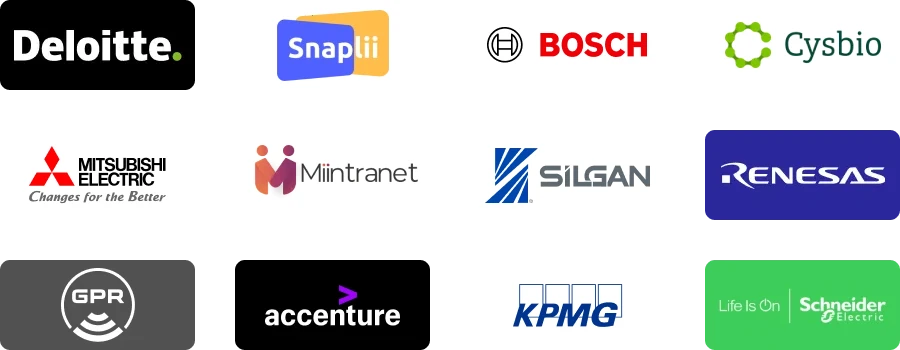| REPORT ATTRIBUTE |
DETAILS |
| Historical Period |
2019-2022 |
| Base Year |
2023 |
| Forecast Period |
2024-2032 |
| Oil and Gas Pipeline Coatings Market Size 2024 |
USD 5,289.66 Million |
| Oil and Gas Pipeline Coatings Market, CAGR |
5.05% |
| Oil and Gas Pipeline Coatings Market Size 2032 |
USD 7,845.06 Million |
Market Overview
The Oil and Gas Pipeline Coatings market is projected to grow from USD 5,289.66 million in 2024 to USD 7,845.06 million by 2032, reflecting a compound annual growth rate (CAGR) of 5.05%.
The Oil and Gas Pipeline Coatings market is driven by the increasing demand for energy, which necessitates extensive pipeline infrastructure to transport oil and gas. Additionally, the need for corrosion protection to extend the lifespan of pipelines and reduce maintenance costs propels market growth. Technological advancements in coating materials and application techniques enhance efficiency and durability, further boosting demand. Environmental regulations and sustainability trends also influence the market, encouraging the development of eco-friendly coating solutions. The growing exploration and production activities in emerging economies contribute to expanding market opportunities.
The Oil and Gas Pipeline Coatings market exhibits strong growth across North America, Europe, Asia-Pacific, and the Middle East. North America and Asia-Pacific lead due to extensive oil and gas exploration and production activities. Key players driving the market include PPG Industries, Inc., Sherwin-Williams Company, Akzo Nobel N.V., BASF SE, 3M, LyondellBasell Industries N.V., Arkema S.A., and Shawcor. These companies focus on innovation and sustainability to meet the evolving regulatory standards and operational challenges, ensuring robust pipeline protection and efficiency.
Access crucial information at unmatched prices!
Request your sample report today & start making informed decisions powered by Credence Research Inc.!
Download Sample
Market Drivers
Rising Energy Demand
The global increase in energy consumption necessitates expanded oil and gas infrastructure, including new pipelines. This growth directly impacts the demand for pipeline coatings. For instance, according to Global Energy Perspective 2023, oil demand increased to pre-pandemic levels in 2023 at 101.7 million barrels per day (MMb/d). However, growth may not last long, as peak demand is projected to materialize before 2030. The rising energy demand also underscores the importance of maintaining and upgrading existing infrastructure, further boosting the market for pipeline coatings.
Offshore Exploration and Aging Infrastructure
The exploration and production of oil and gas in challenging offshore environments require coatings with exceptional resistance to corrosion, marine organisms, and extreme weather conditions. For instance, the boom in gas exploration has opened up new markets for pipeline coatings and joint coating materials as estimates of pipeline construction in Pennsylvania alone are in the range of 12,000 to 27,000 miles by the year 2030. Many existing pipelines are aging, increasing the risk of failures. Recoating these pipelines is crucial to ensure their continued operation, driving demand for coating solutions. These factors collectively underscore the critical role of advanced coatings in maintaining pipeline integrity and supporting the global energy supply chain.
Corrosion Prevention
Pipelines are exposed to harsh environments, including corrosive soils, seawater, and chemicals. Coatings act as a protective barrier, preventing corrosion and extending the pipeline’s lifespan. This protective measure is crucial in maintaining the integrity of pipelines and reducing the risk of leaks and failures. The durability provided by these coatings ensures that pipelines can withstand various environmental challenges, ultimately enhancing their operational longevity.
Environmental Regulations
Stricter environmental regulations mandate the use of high-quality coatings to prevent pipeline failures and potential environmental disasters. Compliance with these regulations drives the demand for advanced coating solutions. Regulatory bodies worldwide emphasize the importance of using effective coatings to minimize the environmental impact of pipeline operations. This regulatory push ensures that companies invest in state-of-the-art coatings to meet safety and environmental standards, thereby fostering innovation and growth in the coating industry.
Market Trends
Increased Use of Insulating Coatings and Digitalization in Inspection
To minimize heat loss and maintain pipeline efficiency, insulating coatings are gaining popularity, particularly in regions with extreme cold climates. This trend is contributing significantly to energy savings and operational cost reductions, as these coatings help in maintaining the desired temperature within pipelines, thereby improving overall energy efficiency. For instance, the introduction of pipeline insulation for Oil & Gas Pipeline Transportation was led by Petrobras in Brazil in 1974 on the OPASA Pipeline. The use of insulating coatings is becoming more prevalent as industries recognize the dual benefits of enhanced thermal management and cost-effectiveness. This trend underscores the importance of developing coatings that not only protect against corrosion but also provide thermal insulation, catering to the evolving needs of the pipeline industry. For example, a survey by the National Association of Corrosion Engineers (NACE) found that 68% of pipeline operators reported using insulating coatings to improve energy efficiency and reduce operational costs. The unique challenges posed by offshore operations necessitate coatings with exceptional resistance to corrosion, marine organisms, and extreme weather conditions. This demand presents significant opportunities for coating manufacturers to develop innovative solutions tailored to the specific needs of offshore applications.
Focus on Sustainable Coatings and Technological Advancements
The industry is increasingly adopting environmentally friendly coatings with low volatile organic compounds (VOCs) and reduced environmental impact. For instance, according to a report by the Environmental Protection Agency (EPA), the use of low-VOC coatings can reduce emissions by up to 80% compared to traditional solvent-based coatings. This shift towards sustainable coatings is driven by growing environmental concerns and stringent regulatory pressures aimed at reducing the ecological footprint of industrial operations. Companies are responding to these demands by developing and implementing coatings that not only meet regulatory standards but also align with broader environmental sustainability goals. As a result, the market is seeing a surge in the availability and adoption of eco-friendly coatings, which promise to minimize harmful emissions and enhance environmental protection. In tandem with the focus on sustainability, continuous research and development efforts are leading to the creation of advanced coatings with superior properties. These innovations include enhanced corrosion resistance, increased durability, and extended longevity, which collectively expand the application possibilities of coatings. The technological progress in this field is not only improving the performance and reliability of coatings but also opening new avenues for their use in more challenging environments. For instance, advancements in nano-coatings and smart coatings are paving the way for more effective and efficient protective solutions across various industries, thereby driving market growth and innovation.
Market Challenges Analysis
Economic and Supply Chain Challenges
The fluctuating nature of oil and gas prices significantly impacts investment in pipeline infrastructure and coating projects. Volatility in these prices can lead to economic downturns, which, in turn, reduce spending on essential coating applications. The fluctuating nature of oil and gas prices significantly impacts investment in pipeline infrastructure and coating projects. For instance, according to the U.S. Energy Information Administration, crude oil prices dropped from an average of $64.90 per barrel in 2019 to $39.68 per barrel in 2020 due to the COVID-19 pandemic. This volatility can lead to economic downturns, which, in turn, reduce spending on essential coating applications. Additionally, the global supply chain for raw materials and components used in coating production is susceptible to disruptions. A survey conducted by the American Coatings Association found that 73% of coating manufacturers experienced supply chain disruptions during the pandemic. These disruptions can create significant hurdles in maintaining a steady supply of essential materials. For example, the price of titanium dioxide, a key component in many coatings, increased from €2,100 per ton in 2016 to €3,600 per ton in April 2022. These disruptions, whether due to geopolitical tensions, natural disasters, or logistical challenges, can create significant hurdles in maintaining a steady supply of essential materials. Managing supply chain risks is crucial to ensure uninterrupted operations and timely delivery of coating solutions to the market.
Technical and Regulatory Compliance Challenges
Developing coatings capable of withstanding extreme corrosion conditions, particularly in offshore environments, remains a significant challenge. Corrosion failures can result in costly repairs and pose severe environmental risks, necessitating the need for advanced, durable coatings. The technical complexities involved in creating such coatings require extensive research and innovation. Additionally, the application of coatings to pipelines, especially in remote or challenging locations, can be time-consuming and labor-intensive. Developing efficient and cost-effective application methods is essential to overcome these hurdles. Moreover, adhering to stringent environmental and safety regulations adds another layer of complexity and cost for coating manufacturers. Staying updated with evolving regulations is essential to avoid penalties and market disruptions. This regulatory landscape demands that companies invest in compliance measures, which can be both financially and operationally taxing. The market is also highly competitive, with numerous players offering similar products. Differentiating products and building strong customer relationships are crucial for success in this environment.
Market Segmentation Analysis:
By Coating Type:
The Oil and Gas Pipeline Coatings market is categorized by coating type, including Fusion Bonded Epoxy, Polyurethane, Coal Tar Enamel, Concrete, Polyolefin, and others. Fusion Bonded Epoxy coatings are highly favored due to their excellent adhesion and corrosion resistance, making them ideal for harsh environments. Polyurethane coatings are valued for their flexibility and durability, providing robust protection against abrasion and impact. Coal Tar Enamel, though traditional, continues to be used for its cost-effectiveness and reliable performance in specific applications. Concrete coatings are primarily utilized for weight and stability in offshore pipelines, while Polyolefin coatings offer exceptional resistance to environmental stress cracking. This diverse range of coatings ensures that the industry can meet various operational needs and environmental challenges effectively.
By Formulation Base:
The market segments into water-based, solvent-based, and powder-based coatings. Water-based coatings are gaining traction due to their low environmental impact and compliance with stringent regulations. Solvent-based coatings, known for their robust performance and quick drying times, are still widely used despite increasing regulatory scrutiny. Powder-based coatings are appreciated for their superior coverage and minimal waste, making them an environmentally friendly option. Each formulation base offers unique benefits, catering to different operational requirements and environmental considerations. The industry’s focus on innovation and sustainability drives the development of advanced coatings that not only enhance pipeline integrity but also align with evolving regulatory standards. This segmentation allows for targeted solutions that address specific challenges within the oil and gas sector, ensuring efficient and safe pipeline operations.
Segments:
Based on Coating Type
- Fusion Bonded Epoxy
- Polyurethane
- Coal Tar Enamel
- Concrete
- Polyolefin
- Others
Based on Formulation Base
- Water-based
- Solvent-based
- Powder-based
Based on Application
- Upstream
- Onshore
- Offshore
- Midstream
- Downstream
Based on the Geography:
- North America
- Europe
- Germany
- France
- The U.K.
- Italy
- Spain
- Rest of Europe
- Asia Pacific
- China
- Japan
- India
- South Korea
- South-east Asia
- Rest of Asia Pacific
- Latin America
- Brazil
- Argentina
- Rest of Latin America
- Middle East & Africa
- GCC Countries
- South Africa
- Rest of the Middle East and Africa
Regional Analysis
North America
North America dominates the global oil and gas pipeline coatings market, holding approximately 35% of the market share. This significant presence is primarily driven by extensive oil and gas pipeline networks in the United States and Canada, coupled with ongoing infrastructure expansion and maintenance projects. For instance, according to the U.S. Energy Information Administration, the United States has more than 2.6 million miles of pipelines, which require regular maintenance and coating. The region’s market is characterized by a strong emphasis on advanced coating technologies that offer superior corrosion protection and extended pipeline lifespans. There’s a growing trend towards the adoption of environmentally friendly coating solutions, reflecting increasing regulatory pressure and environmental concerns. The North American market sees high demand for fusion-bonded epoxy (FBE) coatings due to their excellent adhesion properties and resistance to cathodic disbondment. Additionally, the region’s harsh climatic conditions, particularly in Alaska and northern Canada, drive the need for specialized coatings that can withstand extreme temperatures and environmental stresses. The presence of major coating manufacturers and continuous research and development efforts further solidify North America’s position in the global market. The region also benefits from stringent pipeline safety regulations, which necessitate regular maintenance and recoating of existing infrastructure, thereby sustaining market growth.
The Middle East and Africa
The Middle East and Africa region follows closely, accounting for approximately 30% of the global oil and gas pipeline coatings market share. This significant market presence is attributed to the region’s vast oil and gas reserves and extensive pipeline networks, particularly in countries like Saudi Arabia, UAE, and Nigeria. The market in this region is characterized by a high demand for coatings that can withstand extreme desert conditions, including high temperatures, UV radiation, and sand abrasion. There’s an increasing trend towards the use of multi-layer coating systems that combine the benefits of different coating materials to provide enhanced protection against corrosion and mechanical damage. The region sees significant investments in new pipeline projects, driving demand for high-performance coatings that can ensure long-term asset integrity. Additionally, the growing focus on offshore oil and gas exploration in the region has led to increased demand for specialized marine coatings that can resist saltwater corrosion and biofouling. As countries in the Middle East and Africa continue to diversify their economies and expand their energy infrastructure, the demand for advanced pipeline coatings is expected to see sustained growth in the coming years.
Key Player Analysis
- PPG Industries, Inc.
- Koninklijke DSM N.V.
- Teknos Group
- Axalta Coating Systems
- Sherwin-Williams Company
- RPM International Inc.
- The Jotun Group
- Shawcor
- Borouge
- Chase Corporation
- Seal for Life Industries, LLC
- Jining Xunda Pipe Coating Material Co., LTD
- Arkema S.A.
- Wah Seong Corporation Berhad
- BASF SE
- 3M
- Akzo Nobel N.V.
- LyondellBasell Industries N.V.
Competitive Analysis
The Oil and Gas Pipeline Coatings market is characterized by intense competition among leading players such as PPG Industries, Inc., Sherwin-Williams Company, Akzo Nobel N.V., BASF SE, 3M, LyondellBasell Industries N.V., Arkema S.A., and Shawcor. These companies invest heavily in research and development to create advanced, environmentally friendly coatings that meet stringent regulatory standards. PPG Industries and Sherwin-Williams are noted for their broad product portfolios and strong global distribution networks, enabling them to capture significant market shares. Akzo Nobel and BASF SE emphasize innovation and sustainability, developing coatings with superior corrosion resistance and durability. 3M and LyondellBasell focus on technological advancements and strategic partnerships to enhance their market presence. Arkema S.A. and Shawcor leverage their expertise in specialty chemicals and engineering solutions, respectively, to offer tailored coating solutions. The competitive landscape is driven by continuous innovation, regulatory compliance, and the ability to provide customized solutions for diverse pipeline environments.
Recent Developments
- In August 2024, RPM International’s stock rating was upgraded to “Buy” by StockNews.com.
- In August 2024, Jotun announced its return to the ONS (Offshore Northern Seas) exhibition, focusing on how the energy industry can “Maintain steel integrity®”.
- In August 2023, PPG Industries completed a $40 million expansion of its resin production plant in Sumaré, São Paulo, Brazil.
- In April 2024, BASF SE launched a metal refinery for battery recycling, which will be working on a prototype basis. This progress will help the organization head toward sustainability.
- In May 2024, INEOS purchased the ethylene oxide and derivatives business of LyondellBasell Industries N.V. This diluted the market valuation of the company.
Market Concentration & Characteristics
The Oil and Gas Pipeline Coatings market exhibits moderate to high market concentration, with a few dominant players like PPG Industries, Sherwin-Williams Company, and Akzo Nobel N.V. commanding significant market shares. These industry leaders benefit from extensive product portfolios, advanced research and development capabilities, and robust global distribution networks. The market is characterized by a strong emphasis on innovation, driven by the need for coatings with enhanced corrosion resistance, durability, and environmental compliance. Additionally, the industry is influenced by stringent regulatory standards and the growing demand for sustainable, low-VOC coatings. Competitive dynamics are shaped by continuous advancements in coating technologies, strategic partnerships, and the ability to offer customized solutions for diverse pipeline applications. This concentration ensures that leading companies set industry benchmarks while smaller players focus on niche segments and regional markets.
Shape Your Report to Specific Countries or Regions & Enjoy 30% Off!
Report Coverage
The research report offers an in-depth analysis based on Coating Type, Formulation Base, Application and Geography. It details leading market players, providing an overview of their business, product offerings, investments, revenue streams, and key applications. Additionally, the report includes insights into the competitive environment, SWOT analysis, current market trends, as well as the primary drivers and constraints. Furthermore, it discusses various factors that have driven market expansion in recent years. The report also explores market dynamics, regulatory scenarios, and technological advancements that are shaping the industry. It assesses the impact of external factors and global economic changes on market growth. Lastly, it provides strategic recommendations for new entrants and established companies to navigate the complexities of the market.
Future Outlook
- The market for oil and gas pipeline coatings will continue to grow due to increasing energy demand and expanding oil and gas infrastructure.
- Technological advancements will lead to the development of more durable and efficient coating solutions.
- Environmental regulations will drive the adoption of low-VOC and environmentally friendly coatings.
- The rising importance of pipeline integrity and safety will boost demand for high-performance coatings.
- Digitalization and advanced inspection technologies will enhance predictive maintenance and early detection of coating failures.
- The growth of offshore oil and gas exploration will create opportunities for specialized marine coatings.
- Investment in research and development will yield innovative coatings with enhanced corrosion resistance.
- The market will see increased use of insulating coatings to improve energy efficiency in pipelines.
- Strategic partnerships and collaborations among key players will drive market competitiveness and innovation.
- Emerging markets, particularly in Asia-Pacific and the Middle East, will present significant growth opportunities for pipeline coating manufacturers.



